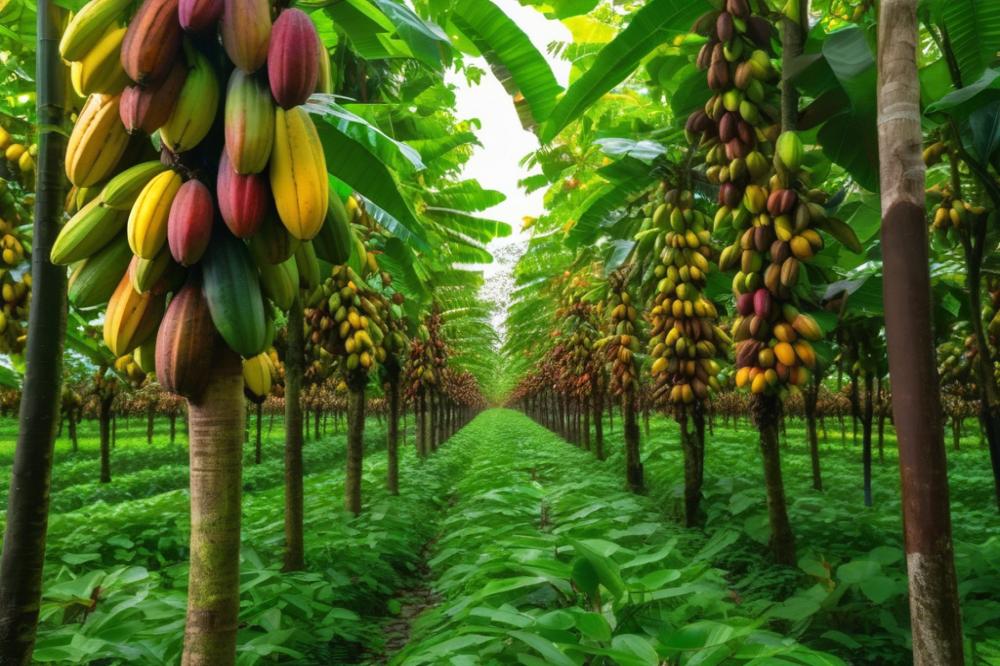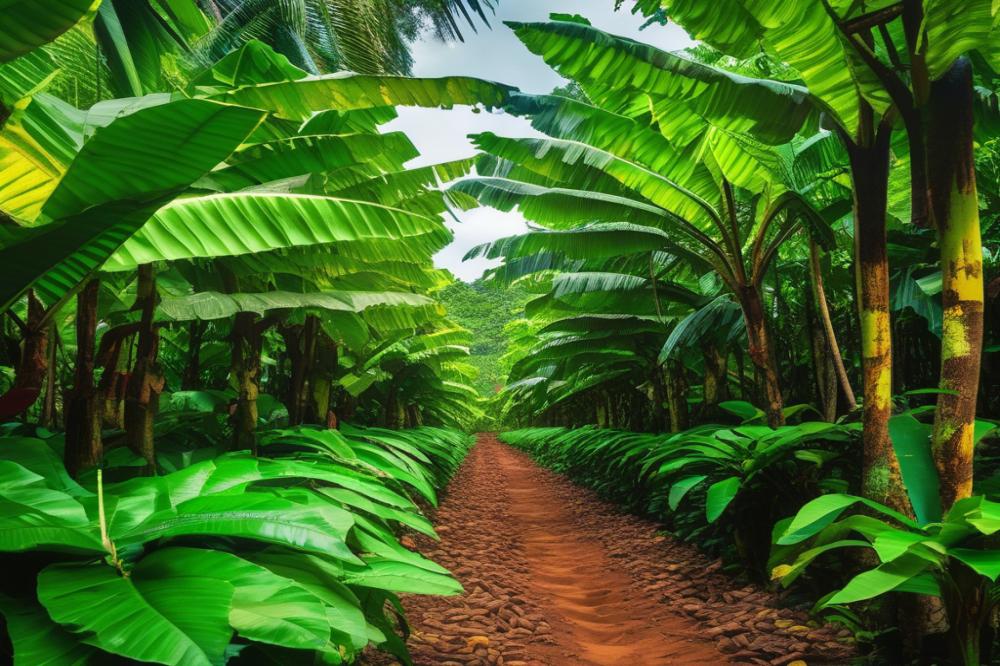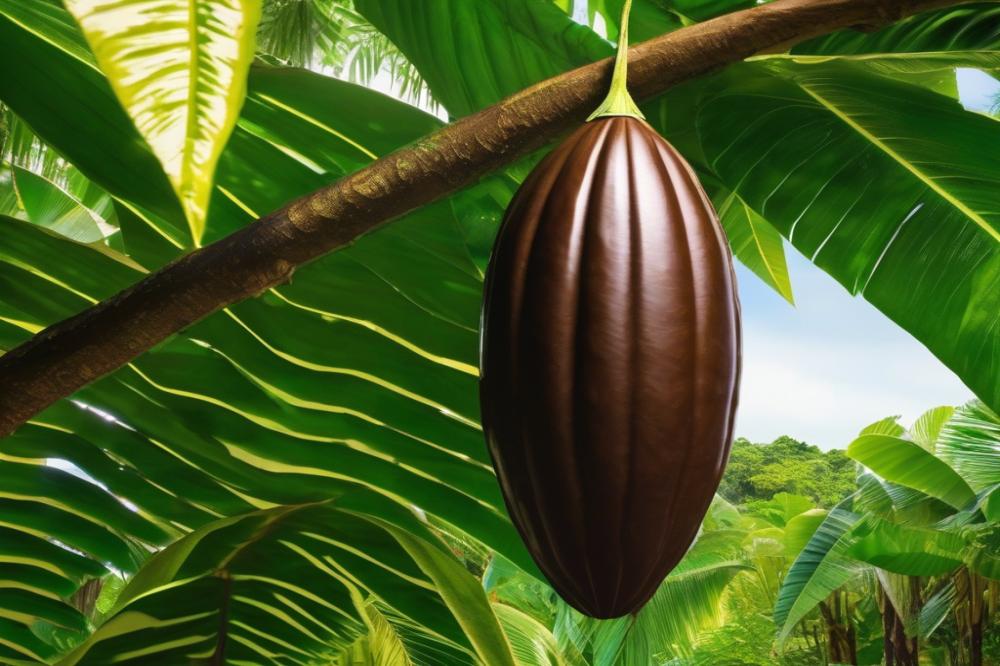Introduction
cocoa holds a prominent place in the world of agriculture. Known for its rich taste and versatility, cocoa is a key ingredient in chocolate and various other treats. Farmers cultivate cocoa mainly in tropical regions, where the climate is warm and humid. This crop is not just valuable for its products but also crucial for the livelihoods of millions of smallholder farmers. Cocoa contributes significantly to local economies, providing jobs and income in rural areas.
A growing interest in agroforestry practices is changing the way cocoa is grown. Integrating cocoa with other crops creates a system that benefits both farmers and the environment. By using intercropping methods, farmers can plant a variety of species alongside cocoa trees. This practice boosts biodiversity and leads to better soil health. Shade trees, for instance, can protect Cocoa plants from harsh sunlight while also supplying nutrients to the soil.
Cocoa agroforestry systems promote sustainable farming practices that can lead to higher cocoa yields. Companion planting, where different crops benefit one another, is often employed. Tropical crops, such as bananas or coffee, can be grown with cocoa in these systems. This not only diversifies farmers’ incomes but also enhances the resilience of the entire farming ecosystem.
As awareness of environmental issues grows, more farmers are adopting these methods. Agroforestry not only supports the cocoa industry but also plays a vital role in Sustainable Agriculture. By fostering biodiversity and improving soil health, farmers take steps toward a more balanced approach to farming. This shift can lead to a more secure future for both the cocoa supply and the communities that depend on it.
Understanding Cocoa Agroforestry

Definition of Cocoa Agroforestry
Cocoa agroforestry is a farming method that combines cocoa cultivation with other plants. This practice allows farmers to grow different types of crops together in a shared environment. Shade trees often protect Cocoa plants, creating a healthier habitat. By utilizing intercropping, farmers can promote biodiversity. Different species work together, offering various benefits to soil and environment.
Role of Agroforestry in Sustainable Farming Practices
Agroforestry plays a vital role in sustainable farming. It helps maintain soil health and reduces erosion. This method encourages a diverse ecosystem that supports wildlife. Additionally, farmers can produce multiple crops from the same land. Using companion planting also improves pest management naturally. The result is a more resilient agricultural system, which benefits both farmers and the environment.
Comparison of Traditional Cocoa Farming vs. Cocoa Agroforestry
Traditional cocoa farming often relies on monoculture. Farmers typically grow cocoa alone, which can lead to soil depletion. Pests and diseases can spread more easily in these systems. In contrast, cocoa agroforestry promotes diversity. The use of shade trees enhances cocoa yield by protecting it from harsh sun. Fertile soil is better maintained when different plants grow together. Plus, the balance of nutrients improves with varied root systems.
Given these differences, agroforestry systems often prove more sustainable. They provide farmers with a wider range of products, like fruit or timber. Such diversity not only supports local economies but also strengthens food security. Embracing this method can lead to a healthier planet. Balancing cocoa production and environmental health is essential for future generations.
Key Components of Cocoa Agroforestry
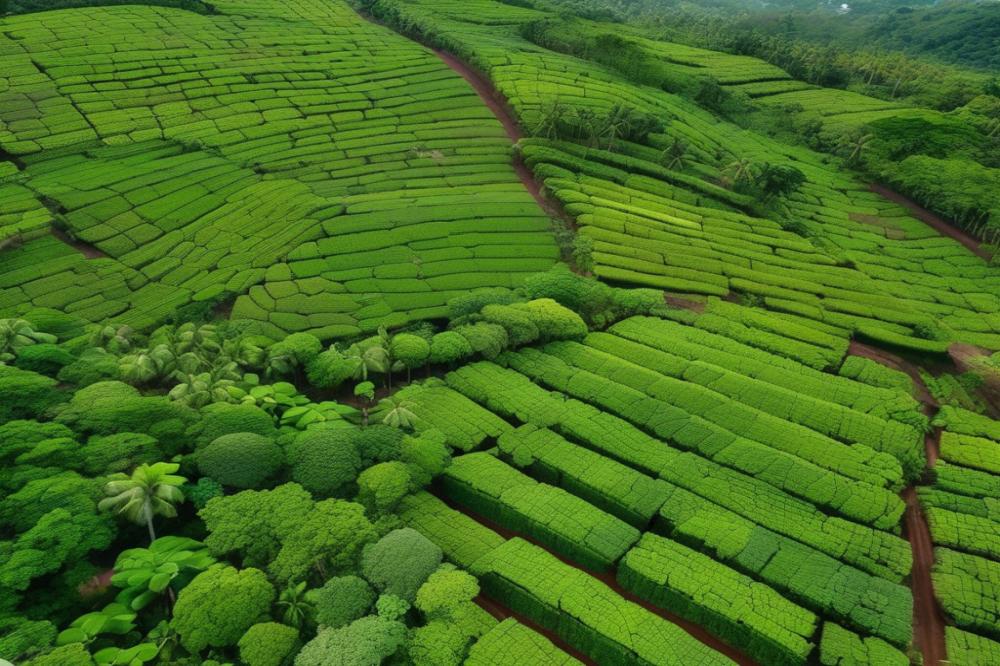
Intercropping Strategies with Tropical Crops
Intercropping is a vital practice in agroforestry systems. This method involves planting cocoa alongside various tropical crops. It maximizes land use and boosts cocoa yield while enhancing overall biodiversity. Farmers can choose crops such as bananas, pineapples, or cassava. These plants can thrive in the same environment as cocoa. They can provide food for families and increase farm income. Moreover, intercropping helps in reducing pests and diseases. A diverse planting system disrupts pest life cycles, providing an edge in pest management.
Selecting Appropriate Shade Trees and Their Benefits
Choosing the right shade trees is crucial for cocoa production. Shade trees improve the microclimate around cocoa plants. They filter sunlight, which reduces stress on cocoa trees. These trees also provide habitat for birds and beneficial insects. Fostering a rich ecosystem is essential for sustainable farming. Some shade trees can enhance soil quality through nitrogen fixation. Others might yield fruits or timber, adding extra benefits. This approach results in healthier cocoa plants with a more consistent yield.
Importance of Companion Planting for Pest Management and Soil Health
Companion planting offers several advantages in cocoa farming. Certain plants can repel pests or attract beneficial insects. For instance, marigolds are known for their pest-repelling properties. Planting these alongside cocoa can reduce chemical pesticide use. This method also boosts soil health by enhancing nutrient content. Legumes, for example, can improve nitrogen levels in the soil. This aids in promoting healthier cocoa growth. Utilizing companion plants can create a more resilient farming system. A well-planned companion planting strategy leads to sustainable farming.
Biodiversity and Environmental Benefits
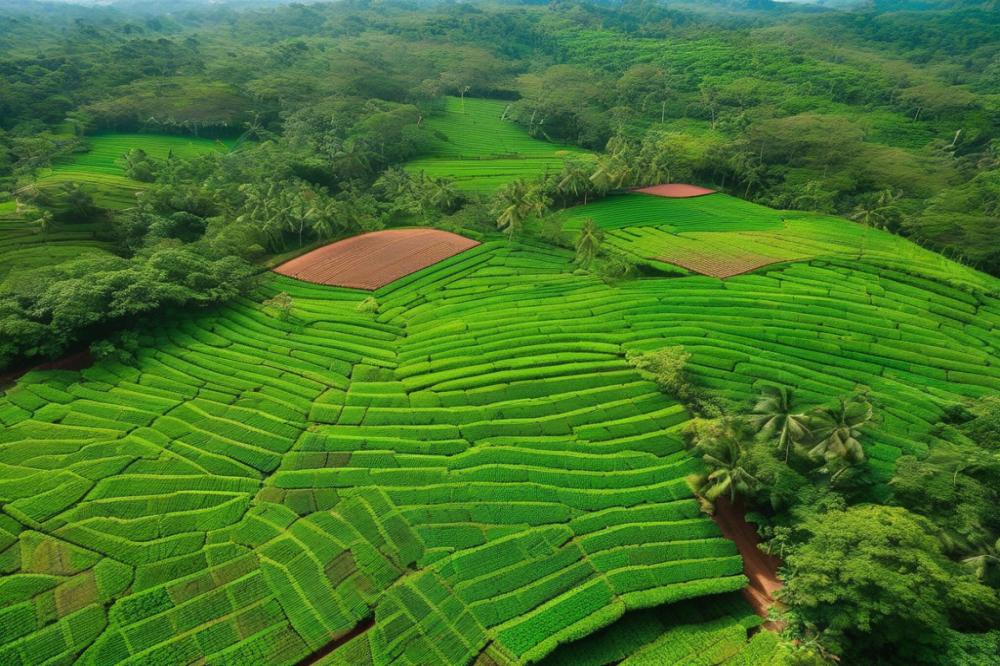
Enhancing biodiversity through cocoa agroforestry systems
Integrating various crops with cocoa can significantly boost biodiversity. Farmers often practice intercropping, which combines cocoa with different plants. Companion planting allows multiple species to thrive together, creating a rich ecosystem. This approach attracts beneficial insects and birds, promoting natural pest control. A diverse environment leads to a more resilient agricultural system, making it easier to withstand diseases and pests.
Impact on soil health and erosion control
Soil health is vital for farming success. The presence of multiple crops enhances nutrient cycling, which benefits cocoa as well. Roots from different plants stabilize the soil and reduce erosion. Organic matter from decaying leaves and plants improves soil structure. This helps retain moisture, which is crucial for crop growth, especially in tropical regions. Healthy soil is linked directly to increased cocoa yield over time.
Role of shade trees in microclimate regulation
Shade trees play a crucial role in regulating the microclimate around cocoa plants. They provide relief from intense sunlight and help maintain consistent temperatures. This protection can lead to better growth conditions for cocoa and other tropical crops. Trees also contribute to moisture retention in the air and soil, creating a more favorable environment. By moderating weather extremes, shade trees support sustainable farming practices.
Economic Viability of Cocoa Agroforestry
Agroforestry offers a promising path for improving cocoa yield while embracing diverse cropping systems. This method integrates cocoa with other plants, which can lead to healthier and more productive farms. When farmers include shade trees and tropical crops, the result is often enhanced biodiversity. That variety helps create a robust ecosystem, which can significantly benefit the soil health.
Intercropping with cocoa allows farmers to plant companion species. These companions can provide nutrients for the cocoa plants and serve as pest deterrents. Improved biodiversity not only helps in managing pests but also contributes to a more resilient farming system. Each added crop can bring its own benefits, making the entire system more productive than lone cocoa cultivation.
Market Opportunities for Agroforestry Products
Many consumers today seek sustainably produced goods. Agroforestry systems yield a variety of products, creating new market opportunities. Farmers can sell cocoa alongside coffee, fruits, or nuts, diversifying their income sources. This mix often leads to increased profit margins, as different crops can thrive at various times of the year.
Moreover, agroforestry products can attract a premium price in the market. Sustainable practices draw interest from environmentally conscious consumers, which can enhance profitability for farmers. As interest in organic and fair-trade products grows, cocoa agroforestry might represent a smart investment for growers.
Cost-Benefit Analysis of Agroforestry versus Monoculture
Comparing the economic returns of agroforestry with traditional monoculture reveals some interesting points. Monoculture often appears simpler but comes with hidden costs, such as the need for more chemical fertilizers and pesticides. These inputs can take a toll on farmers’ wallets and the environment.
In contrast, agroforestry systems leverage natural processes to enhance productivity and reduce costs. Farmers can save by using fewer chemicals while improving soil health. A well-planned agroforestry setup can return better yields over time, ultimately proving to be more economically viable.
Investments in agroforestry might initially seem higher due to the need for planning and implementation. However, farmers see the benefits as they adopt sustainable farming practices. Over time, reduced reliance on inputs often leads to significant savings. In the long run, diverse cropping aligns with rising consumer demand for sustainability, which strengthens market dynamics.
Implementing Cocoa Agroforestry Practices
Steps for Transitioning to Cocoa Agroforestry
Starting the switch to agroforestry can feel daunting. First, farmers should assess their land. Understanding the current soil health is crucial. Next, selecting suitable shade trees is important. These trees not only provide shelter but also enhance biodiversity. Companion planting is another technique to try. This method involves growing different crops together for better growth. Intercropping with tropical crops can also work wonders. Farmers must plan how to introduce these new elements gradually. Moving plants can minimize disruption to the existing ecosystem. It is advisable to monitor crop yields closely during this transition. Adjusting practices based on what works best is key.
Challenges and Solutions in Implementation
Not all farmers will find this transition easy. Common issues include pests and diseases that thrive in dense plantings. Organic pest control methods can be effective in such situations. Sometimes, there is a lack of knowledge about agroforestry techniques. Training workshops can help share information and skills. Costs can also be a concern for many farmers. Access to financing or grants could alleviate some of these financial burdens. Farmers might worry about initial reductions in cocoa yield, but patience is essential. Over time, enhanced soil health can lead to better production.
Case Studies of Successful Cocoa Agroforestry Projects
Several projects around the world showcase the benefits of this approach. In Ecuador, a cooperative successfully integrated shade trees with their cocoa plants. They reported increased biodiversity and improved soil quality. In Ghana, farmers adopted intercropping strategies to boost their harvests. Growing plantain and cassava alongside cocoa resulted in higher incomes. Another inspiring example comes from Indonesia, where farmers used companion planting. By combining cocoa with coffee and spices, they diversified their crops. The success stories highlight that sustainable farming can be beneficial. These projects serve as proof that cocoa agroforestry can offer viable solutions and improve local economies.
Final Thoughts on Cocoa Agroforestry
Summary of the benefits of cocoa agroforestry
Innovative practices in cocoa farming can lead to multiple advantages. Growing cocoa alongside other crops enhances soil health. This method diversifies farmers’ income sources, reducing reliance on a single crop. Better management of pests and diseases also occurs through biodiversity. Shade trees provide a cooler microclimate, benefiting the cocoa plants. Nutrient cycling improves when multiple species coexist. Farmers often notice that their land becomes more resilient to climate changes.
The future of cocoa farming and its role in Sustainable Agriculture
Cocoa farming has a significant part to play in sustainable agriculture. As awareness about environmental issues grows, integrating crops in farming systems could become common. This practice may help combat deforestation while producing high-quality cocoa. Future farmers can embrace agroforestry techniques to improve sustainability. These methods can be part of an essential shift toward greener practices. Enhancing biodiversity in cocoa plantations can contribute to better ecosystem management.
Call to action for farmers and stakeholders to embrace cocoa agroforestry
Farmers, organizations, and stakeholders need to consider this approach seriously. Collaboration among communities ensures a collective effort towards sustainable farming. Training and resources should be accessible to those looking to adopt new practices. Everyone has a role in promoting ecological methods in agriculture. The time to act is now. Embracing this innovative system could lead to healthier farms, thriving communities, and a more sustainable future.

